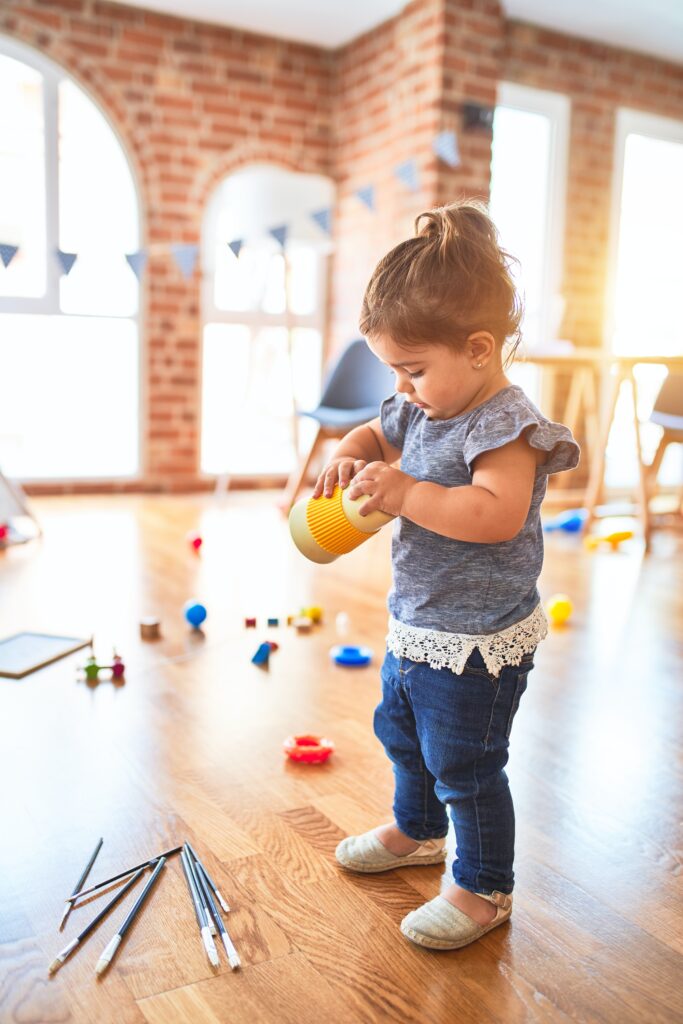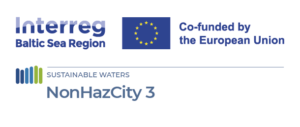From the beginning of our lives we are surrounded by thousands of various things made from different materials. Plastic is one of the most popular ones. It is convenient and cheap for producers to make objects from plastic. When babies are born, they are immediately surrounded by plastic things. Many toys are made from different plastics, you can find plastics in furniture, mattress covers or other accessories for kids. Why are children more vulnerable by hazardous substances, how to recognize the danger and what alternatives could you choose?
Why is it more dangerous for children?
Various hazardous substances (HS) in plastic objects can disrupt the endocrine system, compromise the immune system, cause various illnesses, including cancer, allergies or even disrupt development of the child. Furthermore, children are more vulnerable due to several reasons:

- Children’s skin surface is larger in relation to their weight as well as the volume of their lungs and their metabolism is faster as compared to adults.
- The immune and neurological systems of a child, especially a baby, are still developing and the detoxification system is not functioning to the full extent.
- Children’s skin is thinner as compared to adults and it is not fully developed, so it can’t function as the proper protective barrier.
- Kids breathe more intensively, therefore can inhale HS more quickly.
- Small children get to know things and surroundings by putting them in their mouth and tasting, so HS travel quickly through the digestive system.
- As children are small they are closer to the floor also when they crawl on all fours so they are more exposed to HS from flooring materials as well as from the dust, which usually seats there.
In result, children’s organisms are more receptive to HS impact and the absorption of chemicals is faster unlike the possibility to get rid of them.
Most common HS in plastic toys and accessories
Phthalates. Disrupts development and the hormone system. Impairs fertility. Can be found in dolls, cuddly toys, flexible plastic elements and electronic toys. Used as plasticizers in PVC toys.
Bisphenol A (BPA). Disrupts the reproductive and hormone system and increases the risk of cancer. Can be found in dolls, transparent plastic elements, electronic toys.
Nonylphenol (ethoxylates). Endocrine disruptor, persistent, accumulates in the environment. Can be found in dolls, cuddly toys, plastic elements. Used as an antioxidant to stabilise polymers of plastic against degradation.
Organotin compounds. Irritates the eyes and skin, toxic to the reproductive system, if ingested is harmful to the central nervous system, endocrine system and reproductive system. Can be found in rigid toy applications (plastic elements), toys from PVC.
Chlorinated paraffins. Carcinogenic, disrupts the hormone system. Can be found in dolls, plastic elements, electronic toys.Used as flame retardants.
Most of these HS are endocrine disruptors (EDCs) which are particularly harmful during critical phases infancy, early childhood and adolescence. EDCs are linked with a wide range of adverse health effects.
How to recognize danger and choose correctly?
Choosing plastic toys, furniture or other accessories for children can be a hard task. Here are some tips:
· First and most important advice – less is more. There is no need to buy hundreds of toys – choose a couple but good quality ones.
· Avoid plastic toys with intensive smell or sticky ones. It can indicate that some HS are used (e.g. phthalates). It is a good idea to let a new plastic thing (toy, furniture) sit unpacked and outdoors for a couple of days – some HS will evaporate.
· Avoid cheap toys, especially from countries that do not fall under EU requirements.
· All toys in the EU must carry a CE conformity marking. But that alone does not guarantee total safety. You can try searching for products with ecolabels. E.g. plastic toys might be marked with Nordic Ecolabel.
· Choose toys or other accessories from natural materials (undyed wood, eco-textile, rubber etc.)
· Avoid electronic toys – plastic parts can get hot and HS can be relieved more easily.
· Avoid letting children play with objects that are not toys (electronic devices like old mobile phones, plastic kitchen appliances, decorations, CDs etc.). Those things do not fall under the toys category and might be regulated not having children in mind.
It is very important to avoid HS from the very beginning. Safety and good health of our children is the most important thing. Avoiding plastics that might be a vessel for HS might help to decrease possible consequences in the future, so it is very important to make informed decisions. Do not forget that children are not only vulnerable in their infant age, but also many years long after, during their entire childhood.

